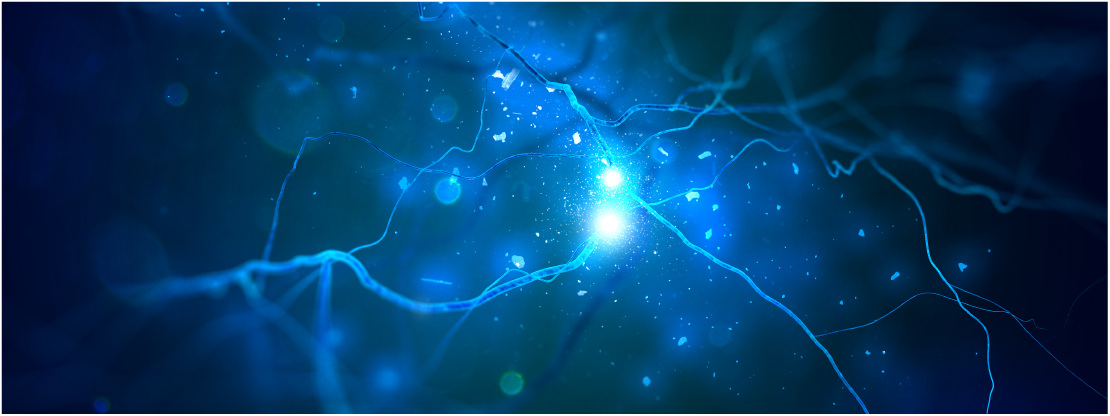Van Andel Institute’s Dr. Hong-yuan Chu is parsing the brain’s intricate communications network in search of insights into how to combat Parkinson’s disease.
He hopes that by identifying the problems that contribute to Parkinson’s, we can find ways to slow or stop the disease’s movement- and non-movement-related symptoms.
VAI Voice caught up with Dr. Chu to chat about his research, why he became a scientist and how one of his favorite discoveries helped change our understanding of Parkinson’s.
Q: What do you study?

Dr. Chu: Interconnected cells in our brain form a neural communication network, which controls a variety of behaviors we undertake as part of daily life, such as walking, writing and playing instruments. At the same time, problems with this neural network often lead to neurological disorders such as Parkinson’s disease. The research in my laboratory aims to understand the neural network dysfunction associated with a spectrum of Parkinson’s symptoms — not only movement-related impairments but also cognitive and psychiatric symptoms. In addition, we are also interested in the role of neural network dysfunction in the progressive degeneration and loss of midbrain dopaminergic neurons, the hallmark pathology in Parkinson’s. These important cells produce a chemical messenger called dopamine, which has many important jobs including helping control our ability to move. The death of these important cells and subsequent loss of dopamine lead to Parkinson’s symptoms.
Q: What are the implications for human health?
Dr. Chu: Right now, we do not have any effective ways to prevent Parkinson’s or slow or stop its progression; all we can do is manage symptoms through medication or surgery. It is worth noting that medications that replenish dopamine and deep brain stimulation (DBS) surgery — two clinically available treatment approaches for Parkinson’s — work by restoring normal neural activity or suppressing abnormal neural activity, within key brain networks for motor control. Unfortunately, both approaches only work for a certain period of time (a few years), after which side effects surpass the therapeutic benefits. With detailed information regarding brain network dysfunction, we may be able to identify key molecules, cell subtypes or network nodes that play an important role in brain dysfunction in Parkinson’s. Such information will help us to design better therapeutic tools to alleviate Parkinson’s symptoms with fewer side effects, or even modify disease progression.
Q: Why did you become a scientist?
Dr. Chu: When I was a little kid, I had lots of “whys” and “hows” in my mind, with a particular interest in how things could happen in daily life and in nature, such as how light bulbs work and where insects hide in winter. But I can’t remember a particular and specific reason for choosing a scientific career; perhaps it is my intrinsic curiosity and passion for figuring out questions and finding answers that drove me to work in a research laboratory.
Q: What’s the coolest/most surprising thing about your research?
Dr. Chu: When people talk about Parkinson’s, they often focus on why and how dopamine-producing cells in the brain die. This area is the most popular and mainstream part of the field. However, it is increasingly recognized that there are more broad changes in the brain that play a critical role in Parkinson’s symptoms besides the death of dopamine-producing cells. The best example would be the astonishing therapeutic effects of deep brain stimulation, which modulates brain function in Parkinson’s.
I am very fortunate to work in this new field with infinite possibilities — studying brain network dysfunction in Parkinson’s at greater resolutions. As an example, major findings from my postdoctoral research on cortico-basal ganglia interaction in models of Parkinson’s were contradictory to our original hypothesis and were not predicted according to the established Parkinson’s pathophysiology. However, it turns out that we revealed an important aspect of neural circuit dysfunction associated with motor deficits in Parkinson’s. Shortly after the publication of our work, several other labs worldwide also reported similar findings. This makes me really proud of it. Our ongoing research at VAI is exploring neural circuitry dysfunction in many other brain regions, with an aim to define a new global picture of Parkinson’s pathophysiology at the molecular and cellular levels. The most exciting findings are on their way!
Learn more about Dr. Chu and his research here. Read more interviews with our scientists here.
